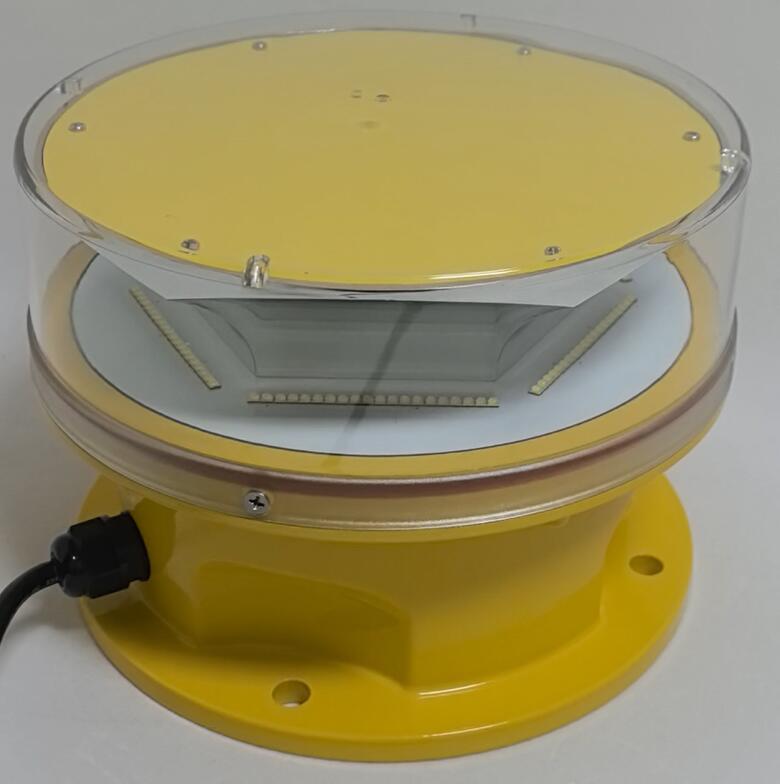Posted: 2025-01-06
Tower lights aviation systems are critical components in maintaining safety and efficiency in air traffic management. These lights, strategically placed on communication towers, buildings, and other tall structures, serve to alert pilots to potential obstacles, particularly in low visibility conditions. By ensuring that these structures are clearly marked, tower lights aviation solutions contribute significantly to the prevention of accidents and the smooth operation of air traffic.
The Role of Tower Lights in Aviation
Air navigation depends on clear visibility and accurate situational awareness. Tall structures pose a significant risk to aircraft, especially during low-altitude flight operations such as takeoffs, landings, and approaches. Tower lights aviation systems act as a safeguard, ensuring that these obstacles are easily visible both during the day and at night.
These lights are especially vital near airports, in urban areas, and along frequently traveled flight paths. By providing consistent and reliable illumination, they help pilots navigate safely, even in adverse weather conditions.

Key Features of Tower Lights Aviation Systems
High Visibility:
Tower lights aviation solutions are designed to produce bright and easily discernible signals. They often use LED technology, which provides superior brightness and clarity compared to traditional lighting options.
Day-Night Operation:
Modern tower lights feature automatic intensity adjustment to suit varying light conditions. During the day, they emit high-intensity flashes, while at night, they operate at reduced intensity to prevent glare while maintaining visibility.
Energy Efficiency:
LED-based tower lights consume significantly less energy than older incandescent systems. Solar-powered options further enhance energy efficiency, reducing operational costs and environmental impact.
| Tower lights aviation |
| Tower light aviation |
Durability and Weather Resistance:
Tower lights aviation systems are built to withstand harsh environmental conditions, including extreme temperatures, strong winds, and heavy precipitation. Their robust construction ensures long-lasting performance and minimal maintenance.
Compliance with Regulations:
These lighting systems adhere to stringent aviation safety standards set by organizations such as the FAA (Federal Aviation Administration) and ICAO (International Civil Aviation Organization). Compliance ensures their effectiveness and reliability in all operational scenarios.
Types of Tower Lights Aviation Systems
Tower lights aviation solutions come in various configurations to meet different requirements:
Red Obstruction Lights:
Used for structures under 200 feet, these lights provide continuous illumination or flashing signals at night.
Medium-Intensity Lights:
Suitable for structures between 200 and 500 feet, these lights often combine white flashing signals for daytime use with red lighting at night.
High-Intensity Lights:
Designed for structures exceeding 500 feet, these lights emit bright white flashes visible from long distances.
Applications of Tower Lights in Aviation
Communication Towers:
Cellular and broadcast towers are among the most common structures equipped with aviation lights. These lights help prevent collisions with aircraft operating at lower altitudes.
Skyscrapers:
Urban high-rises close to flight paths or airports require tower lights to ensure they are clearly marked for passing aircraft.
Wind Turbines:
Renewable energy installations, especially large wind farms, use aviation lighting to highlight turbines and ensure pilot safety.
Cranes and Temporary Structures:
Construction sites often require tower lights aviation systems to mark cranes and other tall equipment that could pose a hazard to air traffic.
Technological Advancements in Tower Lights Aviation
The evolution of tower lights aviation systems reflects advancements in lighting and monitoring technologies. Some recent innovations include:
Smart Monitoring Systems:
Remote monitoring and control allow operators to track the status of tower lights in real-time, ensuring prompt maintenance and minimizing downtime.
Solar-Powered Lights:
Solar energy integration provides a sustainable and cost-effective solution, particularly for remote or off-grid locations.
Advanced Optics:
Improved lens designs enhance light distribution, ensuring uniform visibility from all angles.
Environmental and Economic Benefits
Energy-efficient tower lights aviation systems, particularly those powered by solar energy, offer considerable environmental advantages. By reducing energy consumption and greenhouse gas emissions, these systems contribute to a more sustainable aviation industry. Additionally, their low maintenance requirements and long operational lifespans result in significant cost savings for operators.
Challenges and Considerations
While tower lights aviation systems offer numerous benefits, they also present certain challenges. For instance, light pollution can impact nearby communities and wildlife. To address this, manufacturers are developing solutions such as shielded lighting and adaptive intensity controls to minimize unwanted illumination.
Another challenge is ensuring uninterrupted operation in extreme weather conditions. Advances in battery storage and weatherproofing are helping to overcome these obstacles, ensuring consistent performance regardless of environmental factors.
The Future of Tower Lights Aviation
As air traffic continues to grow, the demand for efficient and reliable tower lights aviation systems will only increase. Future developments are likely to focus on further enhancing energy efficiency, integrating advanced monitoring technologies, and improving adaptability to diverse environments.
Additionally, the global push toward sustainability will drive the adoption of solar-powered and eco-friendly solutions. These advancements will ensure that tower lights aviation systems remain a cornerstone of air traffic safety for years to come.
Tower lights aviation systems play an essential role in ensuring the safety and efficiency of modern air travel. By marking tall structures with reliable and visible signals, they help pilots navigate safely and confidently. With continuous advancements in technology and a commitment to sustainability, these systems will remain at the forefront of aviation safety, illuminating the path for a safer and more efficient future.